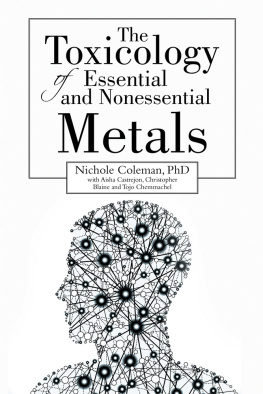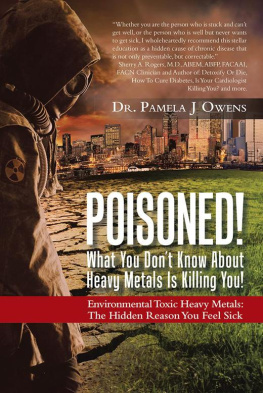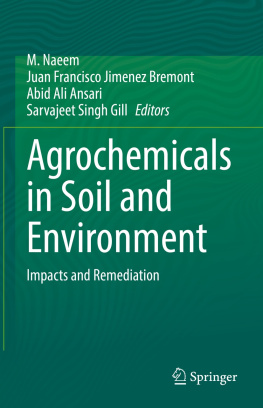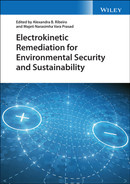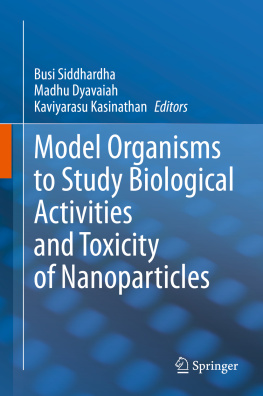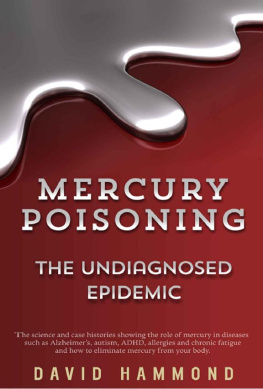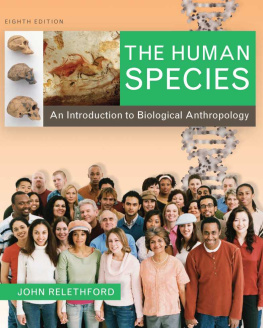Table of Contents
List of tables
- Tables in Chapter 2
- Tables in Chapter 4
- Tables in Chapter 5
- Tables in Chapter 6
- Tables in Chapter 7
- Tables in Chapter 8
- Tables in Chapter 9
- Tables in Chapter 10
- Tables in Chapter 11
- Tables in Chapter 13
- Tables in Chapter 14
List of illustrations
- Figures in Chapter 1
- Figures in Chapter 2
- Figures in Chapter 3
- Figures in Chapter 4
- Figures in Chapter 5
- Figures in Chapter 6
- Figures in Chapter 7
- Figures in Chapter 8
- Figures in Chapter 9
- Figures in Chapter 10
- Figures in Chapter 11
- Figures in Chapter 12
- Figures in Chapter 13
- Figures in Chapter 14
- Figures in Chapter 15
- Figures in Chapter 16
Landmarks
Table of Contents
Ecotoxicology Essentials
Environmental Contaminants and Their Biological Effects on Animals and Plants
Donald W. Sparling
Cooperative Wildlife Research Laboratory and Department of Zoology, Southern Illinois University, Carbondale, IL, USA

Copyright
Academic Press is an imprint of Elsevier
125 London Wall, London EC2Y 5AS, UK
525 B Street, Suite 1800, San Diego, CA 92101-4495, USA
50 Hampshire Street, 5th Floor, Cambridge, MA 02139, USA
The Boulevard, Langford Lane, Kidlington, Oxford OX5 1GB, UK
Copyright 2016 Elsevier Inc. All rights reserved.
No part of this publication may be reproduced or transmitted in any form or by any means, electronic or mechanical, including photocopying, recording, or any information storage and retrieval system, without permission in writing from the publisher. Details on how to seek permission, further information about the Publishers permissions policies and our arrangements with organizations such as the Copyright Clearance Center and the Copyright Licensing Agency, can be found at our website: www.elsevier.com/permissions.
This book and the individual contributions contained in it are protected under copyright by the Publisher (other than as may be noted herein).
Notices
Knowledge and best practice in this field are constantly changing. As new research and experience broaden our understanding, changes in research methods, professional practices, or medical treatment may become necessary.
Practitioners and researchers must always rely on their own experience and knowledge in evaluating and using any information, methods, compounds, or experiments described herein. In using such information or methods they should be mindful of their own safety and the safety of others, including parties for whom they have a professional responsibility.
To the fullest extent of the law, neither the Publisher nor the authors, contributors, or editors, assume any liability for any injury and/or damage to persons or property as a matter of products liability, negligence or otherwise, or from any use or operation of any methods, products, instructions, or ideas contained in the material herein.
British Library Cataloguing-in-Publication Data
A catalogue record for this book is available from the British Library.
Library of Congress Cataloging-in-Publication Data
A catalog record for this book is available from the Library of Congress.
ISBN: 978-0-12-801947-4
For Information on all Academic Press publications visit our website at https://www.elsevier.com/

Typeset by MPS Limited, Chennai, India
Section I
Basic Principles and Tools of Ecotoxicology
Outline
Chapter 1
An Introduction to Ecotoxicology
Abstract
Ecotoxicology is the study of contaminants in the natural environment and their effects on organisms. It has been variously defined as toxicity testing on one or more components of the ecosystem or the science of predicting effects of potentially toxic agents on natural ecosystems and on nontarget species. Contaminants may be taken up or assimilated by organisms through a number of ways, including consumption, dermal absorption, and inhalation. Once in an organism, the chemical can be rapidly depurated, usually through urination or defecation or stored in certain tissues. When chemicals are stored in an organism, they may accumulate at levels higher than found in the environment in a process called bioconcentration. They might even be transferred to higher trophic levels, with each level having greater concentrations than the preceding ones; this is called biomagnification. If an organism assimilates sufficient chemicals, harmful effects may occur, including sublethal effects or even death. The dose necessary to produce death in 50% of affected organisms is called the median lethal concentration.
Keywords
Sublethal effect; lethality; octanol/water coefficient; bioconcentration; biomagnification; environmentally realistic concentration; median lethal concentration
Terms to Know
Ecotoxicology
Anthropogenic
Sublethal Effects
Lethality
Compensatory Effects
Additive Effects
Octanol/water Coefficient (Kow)
Soil/water Coefficient (Koc)
Persistence
Photolysis
Bioavailability
Bioassimilation
Bioconcentration
Biomagnification
Hyperaccumulate
Dissolved Organic Carbon (Matter)
Environmental Matrix
Environmentally Relevant Concentration
Median Lethal Concentration (Dose)
Median Effect Concentration (Dose)
No Adverse Effects Level
Lowest Observed Adverse Effects Level
Introduction
A good starting place in this introductory chapter is to define the basic subject of this book, ecotoxicology. Although toxicology, the science of poisons to humans, has been studied for hundreds of years, ecotoxicology is relatively new. It is generally accepted that Rachel Carsons landmark book Silent Spring (1962) awoke the country to the potential dangers of pesticides, mostly DDT and its relatives, to the environment and that this book served as the impetus for starting the science. The term ecotoxicology was first coined by Rene Truhaut in 1969 to denote a natural extension of ecology and toxicology that included the effects of chemical pollutants on any aspect of the environment ( as the science of predicting effects of potentially toxic agents on natural ecosystems and on nontarget species. Virtually all other definitions include chemicals or contaminants, effects, and ecosystem or ecology. The overriding objective of ecotoxicology is to understand how chemicals (usually of human origin or anthropogenic) behave in the natural environment and how they affect organisms in that environment. Specific investigations will have objectives that refine or limit that overriding one, but essentially all ecotoxicological studies fall under that one umbrella.
As you might surmise after a few moments of thought, to accomplish that one main objective requires many different disciplines. Practitioners of the science have at least some expertise in chemistry, physiology, ecology, statistics, risk assessment, and similar areas. Very few investigators can truly be experts in all of these areas so in todays era of specialization, scientists tend to focus on one of these areas or subdisciplines.


